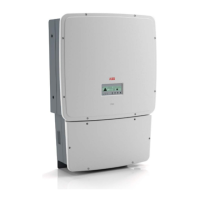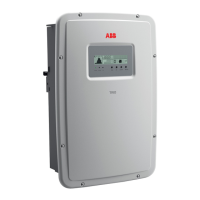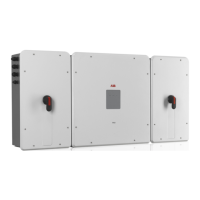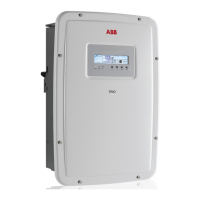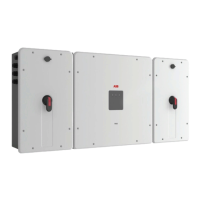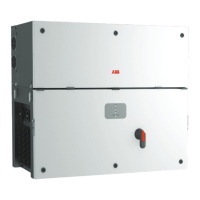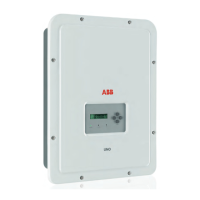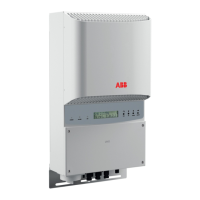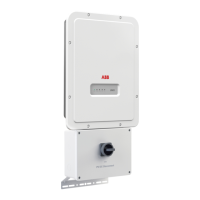Notes on the sizing of the system
Decisions about how to structure a photovoltaic system depend on a number of factors and considerations such
as the type of modules, the availability of space, long-term energy production goals, etc. A conguration program
to correctly size the photovoltaic system is on the the ABB website at www.stringsizer.abb.com.
Protective devices within the inverter
Anti-Islanding
In the event of a local utility company grid outage, or when the equipment is switched off for maintenance operations,
the inverter must be physically disconnected safely, to ensure protection of people working on the grid, all in
accordance with the relevant national standards and laws. To prevent possible islanding (the condition in which a
distributed generator (DG) continues to power a location even though electrical grid power from the electric utility
is no longer present), the inverter is equipped with an automatic protective disconnection system called an Anti-
islanding system.
Ground fault in the photovoltaic modules
This inverter must be used with photovoltaic modules connected with “oating” connections -- that is with positive
and negative terminals that are not grounded. An advanced ground fault protection circuit continuously monitors
the ground connection and disconnects the inverter when a ground fault is detected. The ground fault condition is
indicated by a red LED on the front panel.
Overvoltage surge arresters
As additional protection to prevent damage caused by lightning discharges and electrostatic induction phenomena,
DC overvoltage surge arresters (-S1, -S1A, -S1B versions) and AC overvoltage surge arresters (-S1A version
only) are integrated inside the wiring box.
Arc Fault Detection (AFD)
This safety function allows the inverter to recognize series electrical arcing on DC cables. Once the arcing has
been detected, the inverter will fall into a secure, disconnected state. The inverter will remain in this disconnected
state even after turning it off and on again until the fault has been cleared.
It is possible to clear the fault and unlatch the unit by pressing the ‘ESC’ button on the display after a complete
check of DC cables. The AFD board performs a safety Self-Test at each start-up providing the result of the test on
the inverter display.
Additional protective devices
The inverter is equipped with additional protective devices to guarantee safe operation in any circumstance. These
protective devices include:
• Continuous monitoring of the grid voltage to ensure the voltage and frequency values stay within operating
limits.
• Control of internal temperatures to automatically limit the power if necessary to ensure the unit does not
overheat (derating).
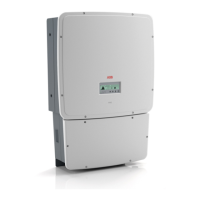
